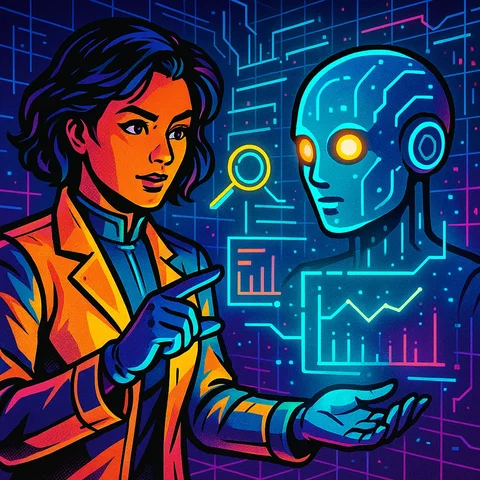Overcoming Challenges in AI Agents: Technological Advances Boost Reliability
Explore how recent technological advancements are addressing AI agent challenges and enhancing their reliability for better AI integration.

title: Overcoming Challenges in AI Agents: Technological Advances Boost Reliability
meta-description: Explore how recent technological advancements are addressing AI agent challenges and enhancing their reliability for better AI integration.
Overcoming Challenges in AI Agents: Technological Advances Boost Reliability
At a Glance
- High project failure rates: Over 40% of “agentic” AI projects are projected to be scrapped by 2027 due to rising costs and unclear value (Reuters, 2025).
- Reliability risks: Advanced AI agents often “hallucinate,” embedding plausible but incorrect information, especially as models become more sophisticated (LiveScience, 2025).
- Industry “agent washing” problem: Only about 130 vendors worldwide offer truly agentic AI; many overstate their capabilities.
- Safety frameworks emerging: Institutions like NIST and international coalitions are creating standards and validation tools to mitigate AI risks and enhance trustworthiness.
- Technological innovation is key: Advances in AI development tools, explainability, and validation are driving improvements in AI agent reliability and safety.
Understanding AI Agent Hype and Challenges
The Rise of AI Agents: Expectations vs Reality
The rapid proliferation of AI agents—systems capable of autonomous decision-making and complex task execution—has driven intense industry excitement. At major events like Google I/O 2025, new “agentic experiences” were unveiled, such as digital assistants that autonomously solve real-world problems through multi-step planning and inter-agent collaboration (see: Don’t let hype about AI agents get ahead of reality). Yet, despite this fanfare, the reality of robust and reliable AI agents remains elusive.
A key challenge is definition: what truly constitutes an “AI agent”? Industry analysts warn of “agent washing,” where vendors rebrand traditional AI tools as agents, muddying the landscape. According to Gartner, only about 130 vendors globally deliver genuine agentic AI, underscoring the gap between marketing and technological maturity (Reuters, 2025).

Key Challenges Facing AI Agents Today
Addressing Trust and Safety Concerns
Despite impressive demos, a significant proportion of AI agent projects fail to deliver in real-world settings. Gartner projects that more than 40% of agentic AI projects will be discontinued by 2027, primarily due to high costs and lack of clear business value. This attrition rate highlights the fragility and immaturity of current AI agent ecosystems (Reuters, 2025).
A central reliability challenge is the phenomenon of AI “hallucination.” As AI models grow more sophisticated, they’re prone to generating plausible but factually incorrect outputs—posing acute risks in fields like healthcare, law, and finance (LiveScience, 2025). Recent studies found that OpenAI’s latest reasoning models (o3 and o4-mini) have higher hallucination rates than earlier versions, showing that increased complexity can introduce new reliability issues rather than solve them.
Mitigating AI Risks
Policymakers and technologists are responding to these risks by developing comprehensive AI safety measures. The U.S. National Institute of Standards and Technology (NIST) is spearheading an AI Risk Management Framework to address bias, privacy, and security vulnerabilities (AP News, 2024). Internationally, networks such as the AI Safety Institutes (AISIs) and task forces like TRAINS are focusing on standardized testing and risk management for advanced AI (Time, 2024).
However, the fast-evolving AI landscape complicates these efforts. Experts highlight challenges ranging from cybersecurity vulnerabilities and “jailbreak” exploits to the tampering of digital watermarks on AI-generated content (Reuters, 2024).
Technological Innovations Improving AI Agent Reliability
Machine Learning and Deep Learning Solutions
Advancements in machine learning (ML) and deep learning have unlocked new capabilities for AI agents, enabling more sophisticated reasoning, natural language understanding, and multi-step automation. Larger language models and improved reinforcement learning algorithms have broadened agent functionality. Yet, as the latest research shows, these innovations alone do not resolve foundational reliability issues—sometimes, they even amplify them.
Enhanced Validation and Testing Frameworks
To improve AI agent reliability, the industry is investing in robust validation and testing frameworks. Standardized development pipelines, formal verification tools, and continuous monitoring systems are now being incorporated into the AI lifecycle. Initiatives like NIST’s AI Risk Management Framework encourage organizations to proactively check for vulnerabilities, bias, and privacy risks at every development stage (AP News, 2024).
Integrating Explainability and Transparency
With AI automation increasingly influencing critical decisions, explainability and transparency have become central to building trustworthy AI systems. Research and enterprise adoption are shifting toward agent architectures that provide clear rationales for actions and outputs. This transparency is vital for auditing AI decisions, especially in regulated sectors.

Emerging Technologies Shaping AI Agent Reliability
The future of AI agents depends on a convergence of technological and institutional advances:
- Inter-agent communication protocols (e.g., Google’s A2A standard) are being developed to enable safe collaboration between autonomous agents, though shared semantics and aligned incentives remain technical hurdles.
- International cooperation on AI safety standards is accelerating, as seen with the formation of AI Safety Institutes and transnational task forces.
- Continuous adaptation of safety frameworks is necessary to keep pace with emerging threats and failures modes, reinforcing the need for agile and forward-looking governance.
Future Trends and Opportunities in AI Agent Development
AI agent reliability will remain a defining challenge as the technology matures. Industry data suggests that improving reliability could prevent the abandonment of billions in AI investments, enhance adoption, and reduce the risk of catastrophic failures in high-stakes domains. As the ecosystem evolves, we can expect:
- Widespread adoption of standardized safety and validation frameworks across industries.
- Increased integration of explainable AI features and real-time monitoring tools.
- Closer collaboration between technology developers, regulators, and international bodies to set global standards.
- Ongoing research into mitigating systemic risks, such as hallucinations and adversarial exploitation.
For organizations looking to leverage AI automation, the key is to prioritize trustworthy AI systems by adopting the latest advancements in safety, validation, and transparency.
Conclusion: Building Trustworthy AI Systems for the Future
As AI agents become more embedded in business and society, their reliability and safety are non-negotiable. While technological advances hold great promise, overcoming the challenges of agent reliability requires a holistic approach—combining innovations in machine learning, robust development pipelines, explainable architectures, and strong institutional frameworks. By staying informed and adopting best practices, organizations can unlock the true value of AI agents while minimizing risks.


